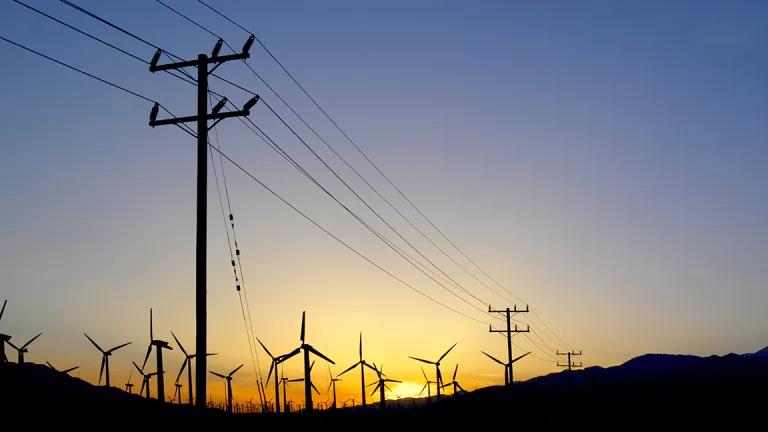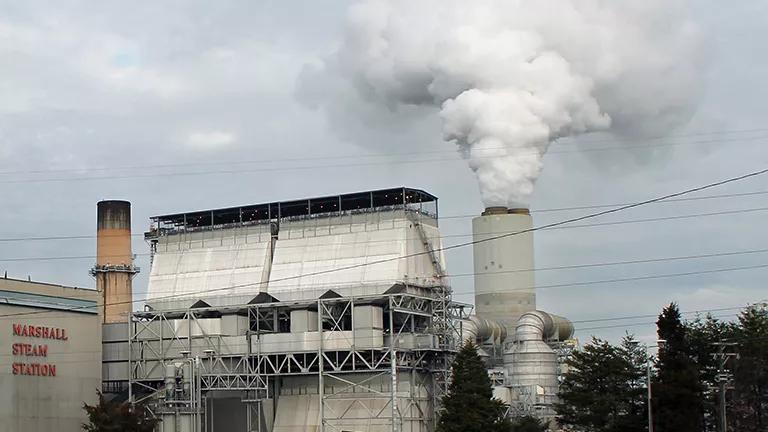Keeping the Lights On with Clean Energy
California needs to ensure a reliable supply of electricity. But we need to do it as much as possible with clean resources, to avoid further burdening vulnerable communities that have historically hosted polluting facilities and to reduce our climate pollution as rapidly as possible.

As California strives to cut carbon to meet its ambitious climate goals, the California Public Utilities Commission (CPUC) has recommended that the state extend the operation of four aging Southern California gas plants scheduled to retire in December 2020. The action also requires that the state’s electricity providers, including the large investor-owned utilities and community choice aggregators, bring online at least 4,000 megawatts of new energy resources—the equivalent of eight large power plants—to ensure grid reliability (meaning no blackouts) by August 2023. These steps were motivated by analyses showing a substantial shortfall in reliable capacity to provide electricity over the next few years.
What does this mean for a clean energy future?
The CPUC decision highlights the significant challenges we face in meeting California’s ambitious clean energy goals while maintaining an affordable, reliable electric supply, and prioritizing air pollution reduction in vulnerable communities. As a state, we need to ensure that we maintain a reliable supply of electricity. But we need to do it as much as possible with clean resources, to avoid further burdening vulnerable communities that have historically hosted polluting facilities, and to reduce our climate pollution as rapidly as possible.
Not all energy resources contribute toward power system reliability in the same way. For example, solar and wind energy—while critical for our clean energy future—may not be available at periods of peak resource need, and therefore don’t “count” as much toward electric system reliability. But by adding battery storage, the reliability of renewable resources can be significantly increased. Other clean resources like energy efficiency and demand response can also contribute towards our resource adequacy needs.
In addition, the aging Southern California gas plants all rely on the use of seawater for cooling. Because of the damage these plants impose on marine life, they were slated for retirement in 2020. Extending their life will impose a heavy burden on ocean ecosystems, on the health of the surrounding communities that have suffered from the smokestack pollution, and on the climate that sustains us. But unless there is adequate reliable replacement power, Southern California faces a significant chance of blackouts. The capacity shortfall stems from a number of factors, including inadequate construction of new generation and reduced availability of imported power.
How do we move forward?
There is a way forward that allows the plants to close and avoids the threat of blackouts. Electricity providers need to step up and demonstrate their leadership and commitment to reducing carbon emissions and air pollution by contracting with clean energy resources to meet the need for reliable power. The types of resources that the electricity providers need to prioritize are stand-alone energy storage, energy storage coupled with renewables, demand response, and energy efficiency. An added bonus is that investment in these resources lead to good jobs. The Oakland Clean Energy Initiative is a good example of how to replace a power plant with distributed, local, clean energy resources.
Without the right mix of clean resources, we won’t be able to retire our old gas power plants without compromising on grid reliability. A recent Union of Concerned Scientists (UCS) report found that these issues are a significant factor in keeping our existing fossil gas power plant fleet from retiring. But if electricity providers are able to successfully procure enough emissions-free capacity, the state won’t need the aging gas plants to maintain reliability. Even if the plant operation does end up being extended, each increment of clean energy procurement can also contribute to reducing the operation of these aging plants, to avoiding carbon emissions and air pollution, and to accelerating the retirement of these plants as soon as possible.
As California moves toward a low-emission grid powered by renewable sources of electricity, it needs to make sure that the grid delivers electricity reliably to all Californians. We see a path forward that relies on clean energy options that enable a strong grid and reliable service while delivering affordable and clean energy to every Californian.



